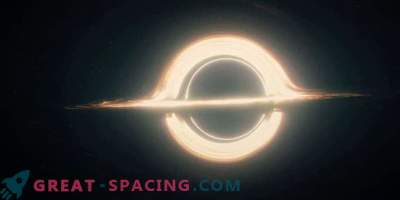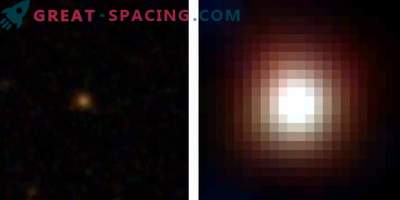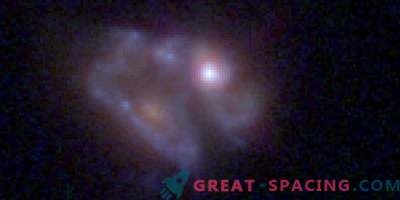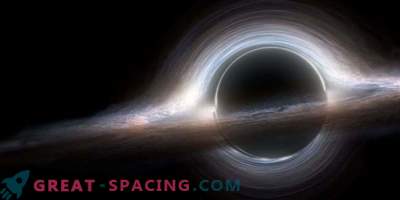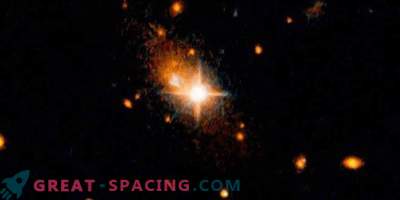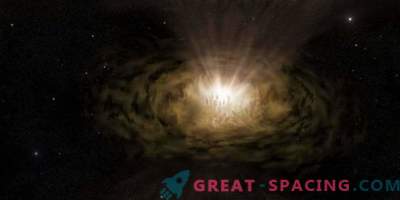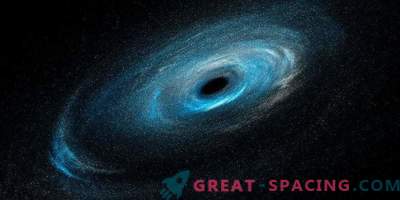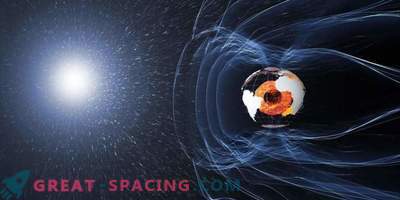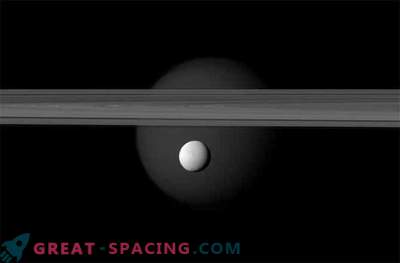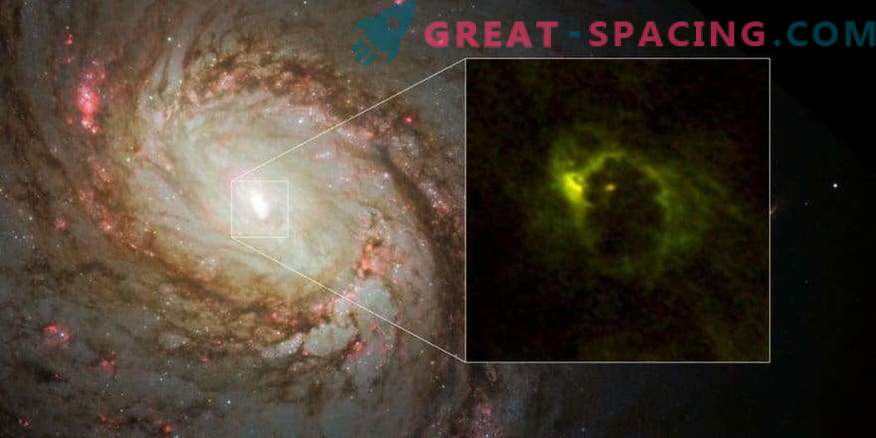
The central portion of the spiral galaxy M77. The Hubble Space Telescope was able to display the gas distribution in the very center. ALMA demonstrated a horseshoe structure with a radius of 700 light years and a central compact component with a radius of 20 light years. The last feature is the gaseous torus. Red is the release of formyl ions, and green is hydrogen cyanide.
The ALMA review showed a rotating dust and gas torus around an active supermassive black hole. For the first time, they began to talk about the existence of such “donuts” a few decades ago, but only recently they managed to confirm the phenomenon in observation.
Monstrous black holes lurk in almost all galactic centers. The more massive the galaxy, the more massive the central black hole. This statement seems reasonable, but galaxies exceed the size of central black holes 10 billion times. For two objects with such different scales it is difficult to influence each other. How did this attitude develop?
Trying to understand this problem, the scientists used the high-resolution ALMA capabilities to review the center of the spiral galaxy type M77. Inside there is an active galactic nucleus, that is, the matter energetically enters a supermassive black hole and emits an intense glow. Scientists have chosen the area around the supermassive black hole in the M77 and resolved a compact gas structure that covers a radius of 20 light years. It turns out that they were able to confirm the theory and show the rotation.
To interpret the various features of the active nuclei, the researchers suggested that ponchikoobraznye structures of dust and gas are around the supermassive black holes. This idea was called the “unified model of active galactic nuclei”. However, it should be understood that this “donut” is tiny, but ALMA displays the structure.
Many scientists have previously observed the center M77, but never fixed such a clear rotation of the gas donut around the black hole. The researchers also caught specific radiation from hydrogen cyanide molecules and formyl ions.
It is also interesting that the distribution of gas around a supermassive black hole is much more complicated than the simple unified model suggested. It seems that the torus is endowed with asymmetry. It turns out that the rotation not only follows the gravitational force of the black hole, but also has a high random motion. Then there is the possibility of two galaxies merging events in the past.
